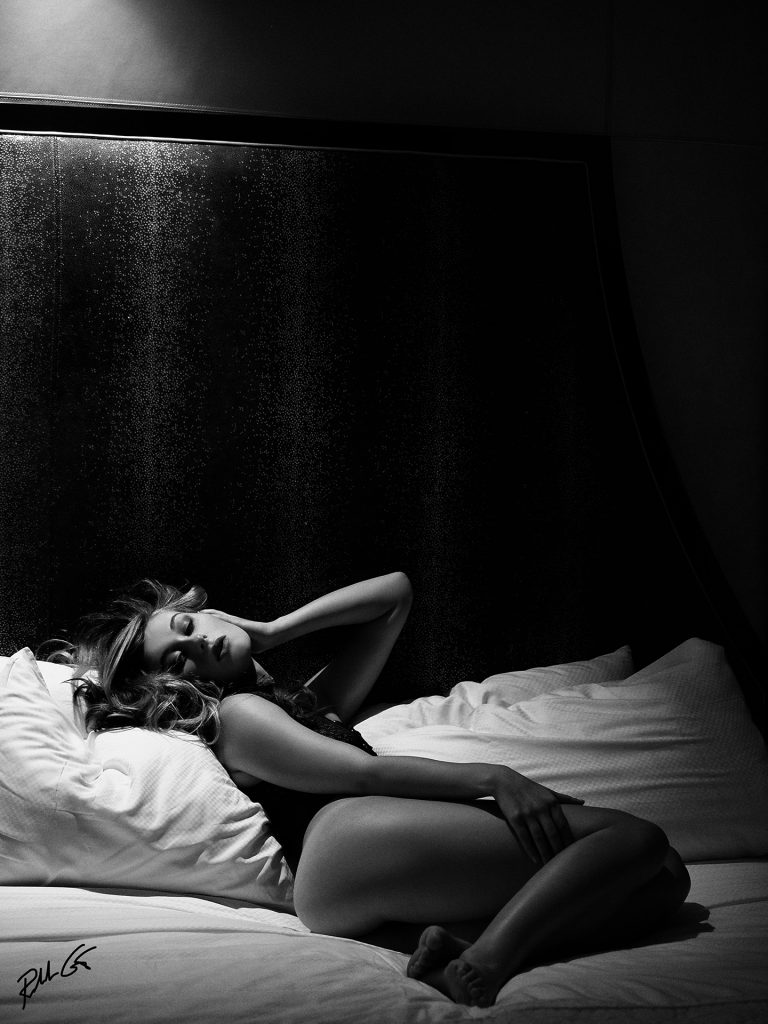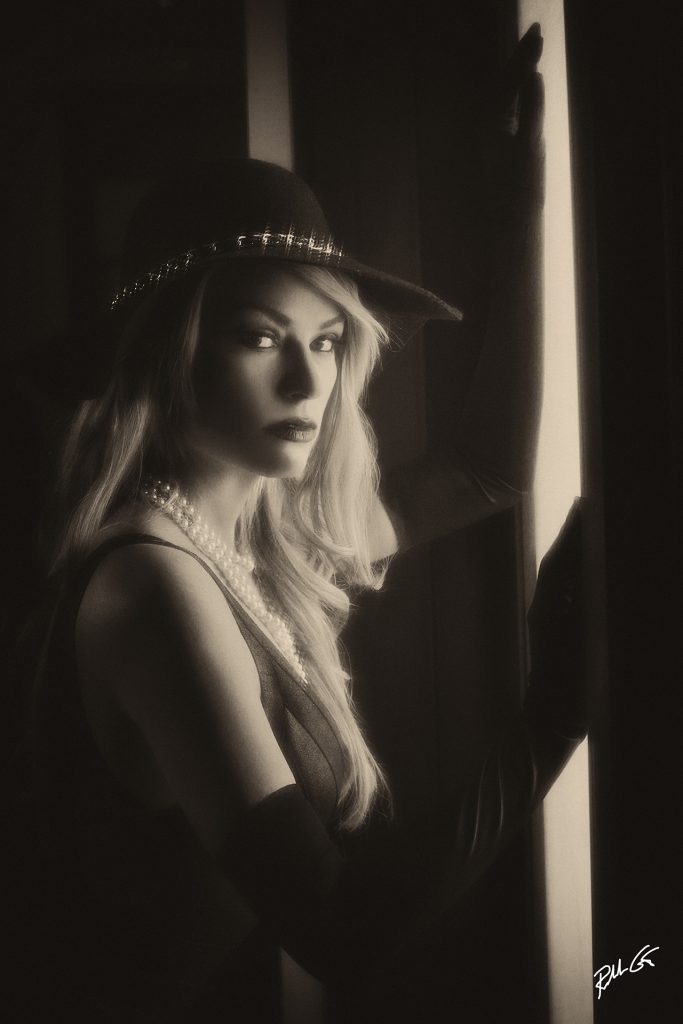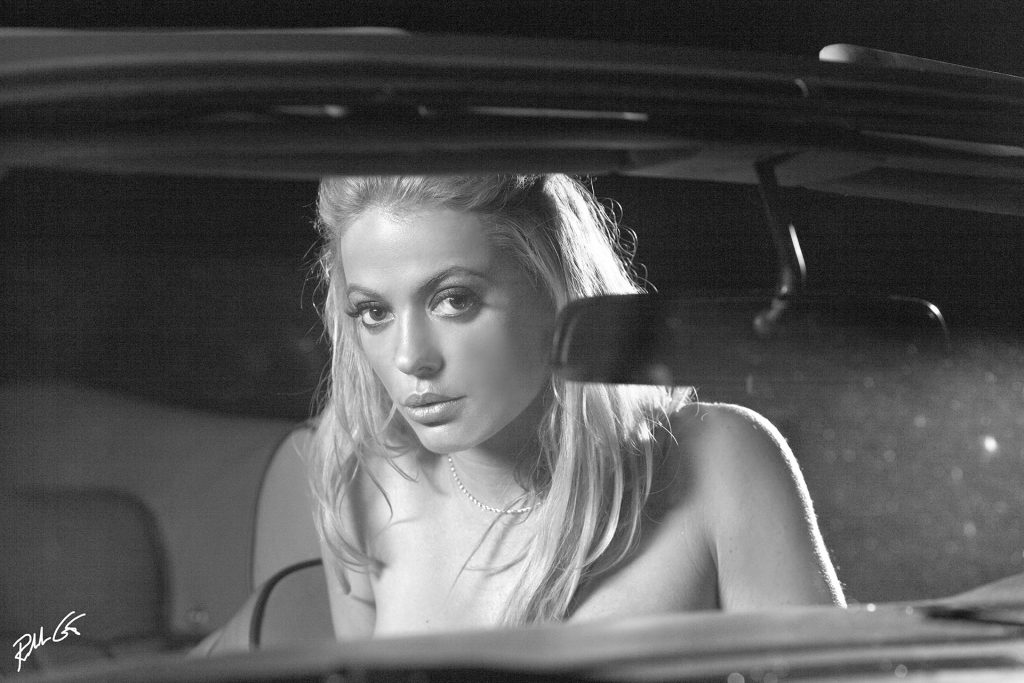The Lack of Lighting Technique for Photography Masterpieces
Low-key lighting is often misunderstood as a type of lighting that requires a solid black background — not true. It’s not the background that separates low-key lighting from other lighting techniques, it’s the use of dark tones combined with chiaroscuro, in addition to the lack of lighting.

This image was illuminated by the ambient light in the room which provided for a low-key lighting effect.
Yes, a black background makes low-key lighting easier don’t let the lack of it stop you from creating these types of dramatic photos. The key is to minimize the background to maintain focus on the subject and use dark tones and shadows to capture your subject’s form. Form is the most basic element of art based on the fundamental that form is a three-dimensional geometrical figure as opposed to shape found in two-dimensional objects.
You can achieve this with the Inverse Square Law easily if you keep your subject close to the light source and at least twice the distance to the background. If you use flash, use a high-sync shutter speed to eliminate or reduce any ambient light too. Study where your light falls in your scene and on your subject and go after the shadows in low-key lighting photography — it’s passionately fun!
Low-key lighting is achieved when you intermix the lights and darks and deep shadows or darker tones on and around your subject and the scene. The background is irrelevant provided the photo is mired predominately in dark tones that help create mood, mystery, drama, and the “heighten sense of alienation felt by the viewer.” Think dramatic film noir, though low-key lighting works with color capture too, as black is black even in color photography.
Normally low-key lighting is based on a one or two-light setup whereas traditional three-point lighting is based on a three-light set up — a main or key light, a fill light and a backlight. This type of traditional studio lighting and high-key lighting lean more toward limited or softened shadow areas whereas low-key lighting thrives on dramatic shadows and dark tones. Black tones are the power to low-key lighting. It’s actually the lack of lighting in the right areas of a photograph that will make your photos weak or strong.
The Light That Is There Is Amplified by The Light That Isn’t There
The power of low-key lighting to invoke emotions from the viewer was long established before the birth of photography during the Renaissance and Baroque periods of painting where chiaroscuro became popular to bring a more realistic look to paintings. One of the most famous paintings with a low-key look is the “Saint John the Baptist,” by Leonardo da Vinci. Low-key painting techniques brought out the illusion of a third dimension in the two-dimensional artist’ canvas. Photography is no different, low-key lighting accentuates an illusion of the third-dimension in a photograph plus you can use postproduction to enhance its effect.

Low-key lighting is a photographic style that relies on dark tones and deep shadows to create an image with impact.
Low-key lighting is also used to hide things you may not want to show purposely, a technique commonly used in fine art nude photos to outline the body but still leave to the imagination. To some photographers, low-key lighting is a lack of lighting technique in areas the photographer wants to leave a mystery to the viewer.
The idea is to keep the light off your background and more on your subject and when you have one or no lights, that’s easy to do. Wait! No lights? Yes, if you don’t own a set of lights, look for lights outdoors, especially when it gets dark. A simple streetlight or even the headlights from your car can provide ample light, just be mindful of your white balance. Basically, low-key lighting relies on very little light, it’s one of the best low-budget genres of photography.
No Rule of Shadows
Besides backgrounds that are misunderstood in low-key lighting, so is the right and wrong use of shadows — there is no Rule of Shadows. And if you firmly believe that, then learn that rule and learn how to break it. It doesn’t exist though shadows need light to survive.
Shadows are the main ingredient in low-key lighting. Many photographers believe there is a requirement for a distinct break between the shadows and highlights. Low-key lighting traditionally relies on a high lighting ratio, the ratio between the brightest part of the image to the darkest part like 8:1, and not the typical 2:1, 3:1 or 4:1 ratios found in traditional three-point lighting. But even with high lighting ratios, there are no rules that require a distinct separation between highlights and shadow areas, though distinct shadow linesand shadow fall-off are acceptable.
The key to shadows isn’t whether they fall off gradually or have a defined edge, what matters is that the shadows define the form the photographer is trying to create. Shadows create form, form creates shape, the three combined create dimension in an image. Shadows can create emotions like fear, grief, despair and vulnerability in addition to mood, mystery, drama, and the “heighten sense of alienation felt by the viewer.”
The idea to low-key lighting in photography isn’t to create a dark photo, but to capture a photo with dark areas created through selective lighting at specific points and to minimize or eliminate light in other areas of the image. Ultimately it’s about the drama created and the power it brings to the final image.

In low-key lighting scenarios, the light that is in the scene is amplified by the light that isn’t there.
Underexposure Is Not Low-Key Lighting
In closing, don’t confuse an underexposed image as a low-key image, there is a difference and one of the major differences is that low-key lighting predominately provides a high contrast between the dark tones and lighter tones. Underexposed images are flat, low-contrast, and just a plain error in your capture. In digital photography you can adjust your camera settings on the fly, simply check your LCD preview screen and histogram. Though keep in mind, your histogram, as explained in Histograms Don’t Lie in Photography, will likely be heavy on the left, with some small narrow spikes in the middle and/or right side of the histogram — this is normal, so don’t panic, and keep shooting!



